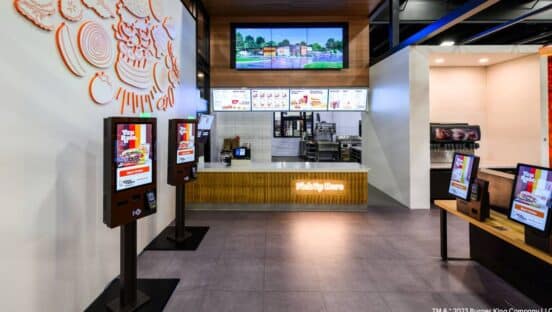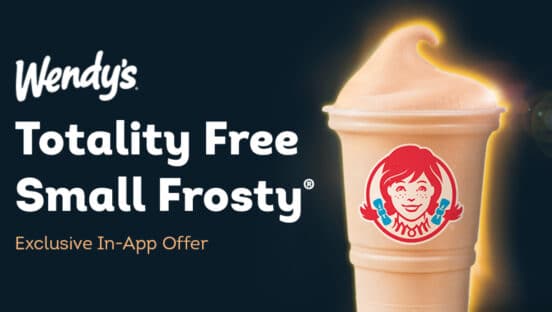In the post-recession economy, major quick-service players are still struggling to find new ways to drive traffic and capture the attention and loyalty of the all-important Millennial consumer.
Now some of the biggest brands in the business, including McDonald’s, Wendy’s, and Burger King, think they’ve found the way to do it: mobile payments.
After launching an app in 2012 and testing mobile payments throughout the last year, Wendy’s recently announced it was ready to roll out the high-tech payment option to guests across the country. Currently available in 85 markets, or roughly 5,800 U.S. locations, the mobile payment option will be expanded to more markets throughout 2014, writes Brandon Rhoten, vice president of digital at Wendy’s, in an email to QSR.
“We already had high engagement with the Wendy’s app, so we’re finding that guests really like the mobile payment option because it’s easy to use and customers already feel comfortable using their smartphones,” he says.
Rather than scanning a barcode on the guest’s phone, Wendy’s cashiers simply ask for a six-digit code generated by the app that allows the customer to pay at the counter without handing over cash or swiping their debit or credit card.
In hopes of further driving transactions, Rhoten says, the brand is also testing enhancements like coupons, rewards, and mobile ordering on its mobile-payments app. “We don’t want a ‘buy 10, get one free’ punch-card style experience,” he says of the loyalty program being tested. “Instead, we want to tailor rewards to people’s specific preferences.”
Burger King is also hopping on the mobile payments bandwagon, rolling out its program to stores across the U.S. this month. While its app will consist of mobile payments, special offers, and nutritional facts in its first stage, the brand may consider mobile preorders in the future, Bloomberg reported last month.
And while it isn’t ready to roll out on a big scale, McDonald’s mobile payment app was tested in Salt Lake City and Austin, Texas, last year. According to Bloomberg, the app allows guests to place orders through their phones before picking up the food at the counter or drive-thru window. It also takes advantage of promotions, coupons, and a loyalty program.
Convenience and speed are two of the primary factors driving quick serves to adopt mobile payments, says Randy Vanderhoof, executive director of nonprofit technology association Smart Card Alliance.
“By having people load up an account in advance and use that account for their purchase—or have a payment card on file that they could charge their purchase to—makes the payment transaction seem to go away,” he says. “That is something that consumers are happy to do, because they don’t want to think about frequenting the retailer, who is actually costing them real money.”
With more than 65 percent of consumers owning smartphones, these mobile payment options also offer brands unprecedented—and often intimate—access to their consumers, says Emmie Fukuchi, associate vice president of innovation and product delivery at loyalty program company LoyaltyOne.
“Payment is a way to tap into a whole bunch of other sources of value,” she says. “If you can engage with [customers] through a mobile device—perhaps providing other sources of value—there are ways to engage with your consumers and there are ways to make the brand more innovative, to make it connect with perhaps a younger consumer.”
While groundbreaking and exciting, testing and rolling out mobile payment options in the quick-service industry isn’t always easy, Vanderhoof says. Educating consumers through social media and in-store promotions to explain how and why to use the mobile payment option is key, as is balancing the cost of promotions with their effectiveness and return on investment.
“Often the brands are using fairly attractive incentives for first-time users—free merchandise and giveaways—but those promotions and giveaways come with a significant cost,” Vanderhoof says. “At some point, they have to be able to generate enough value from the customers who use the app on a regular basis.”
Perhaps the biggest challenge and risk is security, as data breaches and fraud can be highly dangerous and permanently damaging to a brand’s reputation. “That doesn’t necessarily mean that mobile payments are not safe,” says Maarten Bron, director of innovations at independent safety science company UL. “But, as always for consumers, perception is reality.”
Because of the many recent security breaches in the restaurant and retail industries, Rhoten says, Wendy’s made sure to build a security system “that would avoid the pitfalls of others.”
“That’s why our registration process is a bit longer than some, why we use dynamically generated codes that self-destruct, and one reason we tested our system for a year,” he adds.
Though Wendy’s, Burger King, and McDonald’s are garnering a lot of attention for their mobile payment tools, the three biggest burger brands in the country are by no means the first in the limited-service industry to test and roll out mobile payments. However, the concepts’ experiments with mobile technology do open the gate for the wider industry to begin testing and using these payment alternatives, says Don Weary, vice president of product management at Sage Payment Solutions.
“Making this an established path forward will pull through many of the smaller brands, the laggers who are waiting to see this path get paved,” he says.
It also opens the door for brands to go beyond mobile payments to capture guest loyalty and tap into their purchasing power, UL’s Bron says. For example, brands could begin using mobile technology to approach nearby guests with offers and targeted messages to drive them into the store, he says.
Though quick-service brands are dipping their toes into the easier end of mobile payment technology to start, Weary says, the industry could quickly see the technology put to more intricate and effective use.
“Some of the more difficult areas of line busting and preordering and matching up your orders with coupons are going to clearly be right there behind that,” he says. “This is really going to bust open the floodgates for a lot more very meaningful innovations in how mobile technology interacts with our customers.”
No matter how it’s being used, Fukuchi says, mobile technology is the way of the future, both in the quick-service industry and beyond. “Consumers are embracing the technology so completely from a personal perspective, and they’re starting to allow brands into that personal space,” she says. “But it’s about what value that brand can bring and how they can bring a source of information or relevance to that consumer in order to keep that relationship going.”










